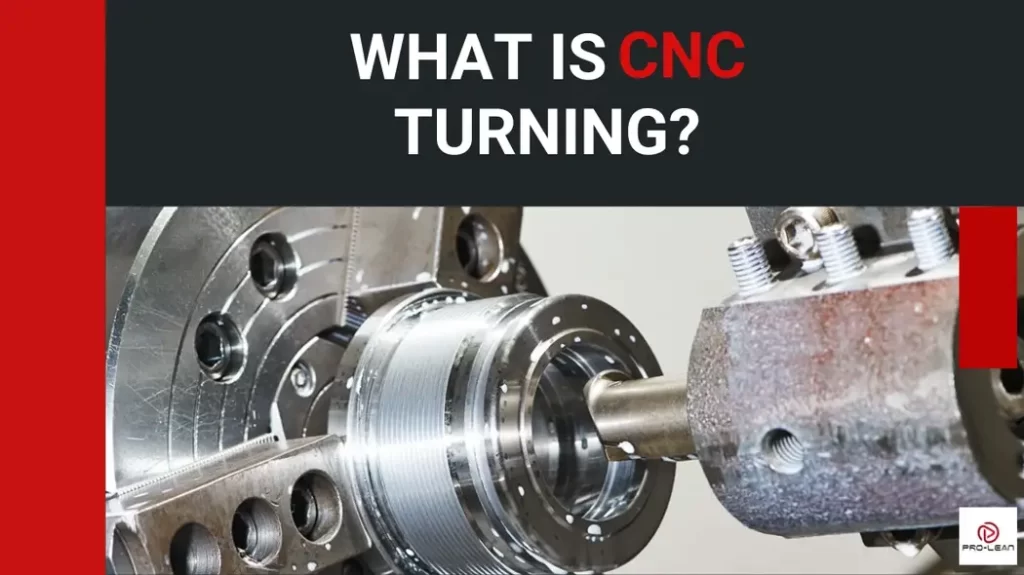
CNC turning
CNC turning is a computer-program-controlled subtractive manufacturing process whereby a stationary machine tool removes material from a rotating workpiece, in either the inner or outer diameter. This process is popularly done on the CNC lathe, which can be a horizontal or vertical version.
The CNC turning process starts with the creation of a CAD model, followed by the conversion of the CAD design for the CNC machine, the preparation of the CNC turning machine, and, eventually, the CNC turning process.
Turning-specific operations, such as turning, facing, and grooving, as well as internal operations, such as reaming and drilling, can all be done on the CNC turning machine.
With different types of CNC turning machines, raw materials, design considerations, and an array of providers to consider, this process can seem too confusing. This article is meant to remove all the confusion for your upcoming projects.
Let’s unpack what CNC turning is all about.
What is CNC Turning?
Computer Numerical Control (CNC) turning is a subtractive manufacturing method usually done on the CNC lathe and characterized by the systematic removal of material from a rotating workpiece using a single-point cutting tool.
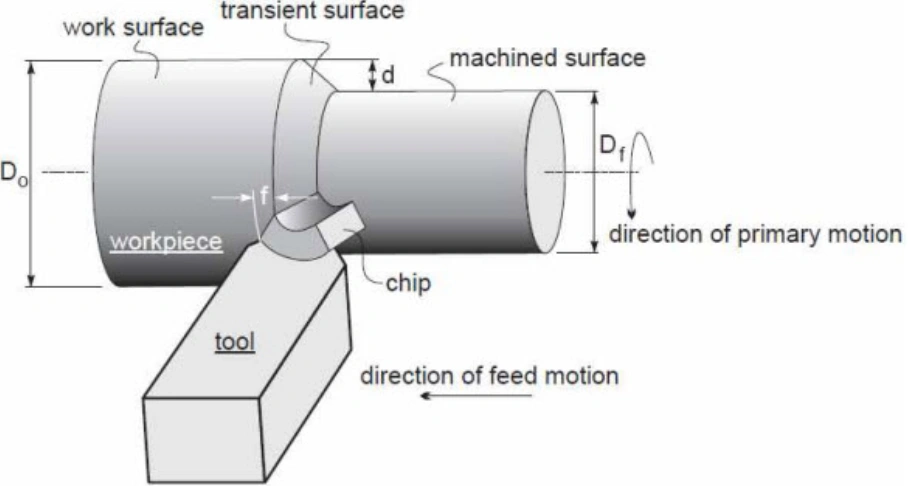
CNC turning illustration
It is a CNC method because a computer code controls the process. CNC turning is mostly popular for producing cylindrical parts, but adjusting the process can also produce complex parts such as custom threaded profiles, eccentric shafts, crankshafts, and internal splines.
History of CNC Turning
The history of CNC turning dates back several thousand years, specifically to 1300 BCE in ancient Egypt. The technology has developed a lot through different eras, including the Greek times, Roman times, and later, the Middle Ages.
Before the CNC technology, there were the Renaissance and Pre-Industrial developments, the Industrial Revolution, and then the automation influence that massively boosted the automotive and aerospace industries.
CNC machining and CNC turning took center stage in the mid-20th century, and it was defined by Computer-Aided Design (CAD) and Computer-Aided Manufacturing (CAM).
What Are The Basics Of CNC Turning?
CNC turning by ProleanTech is characterized by a controlled interaction between a single-point turning tool and a workpiece. Whether it is in a lathe or a turning center, the turning manufacturing process is largely under computer control.
CNC turning can be summarized through its basic steps, namely CAD modeling, CAM and G-code step, setting up the CNC turning machine, executing the CNC turning operation, and post-processing activities.
Step 1: Computer-Aided Design (CAD)

CNC turning digital design
CAD software is used to produce a detailed digital design of the expected part. This model can be produced by tracing the image using the vector cut paths or through automatic conversion of the image.
Step 2: Computer-Aided Manufacturing (CAM)
The second step in CNC turning entails using Computer-Aided Manufacturing (CAM) software to create instructions and toolpaths from the CAD model. The conversion from CAD model file to a machine-readable file is aided by tools like the Initial Graphics Exchange Specification (IGES) and Standard for the Exchange of Product Data (STEP).
Step 3: Machine Setup
Setting up the CNC turning machine is about prepping everything before the machining process. The CNC turning service provider focuses on workholding devices, cutting tools, the tool turret, CNC program fine-tuning, and safety requirements during machining.
Step 4: CNC Turning Step
When all is set, it is time to switch on the turning process and let the cutting tool and the rest of the relevant machine parts do the work. The startup process comprises turning on the power, powering the controller, and loading the CNC program from the controller.
Step 5: Post-Processing
Since the CNC turned part often needs refining, it is important to also be conversant with the post-processing steps. Typical post-processing activities for CNC turning include heat treatment, chemical treatment, and mechanical processing.
You can refer to the FAQ section for specifics on how to get your CNC turning project running.
Key Design Considerations in CNC Turning
CNC turning service providers consider the following points when designing for CNC turning and before undertaking the steps outlined above;
- Tool access
- The wall thickness of the part
- Surface finish requirements
- Material machinability
- Part’s length-to-diameter ratio
What Is CNC Programming?
CNC programming is a coding system that produces instruction sets for the machine to manufacture parts. The CNC machine utilizes these instructions to follow detailed blueprints for parts of varying complexity.
For CNC systems, the codes are either G-codes or M-codes, for tool position & material control, and tool rotation & machine functions, respectively. CNC programming can be manual, CAM, or conversational.
- Manual CNC Programming – The manual approach is the pioneer format, which is much harder than the rest. The machinist must know the machine’s response. It is best done for simple parts.
- CAM CNC Programming – A software that derives the program from the CAD design. This type allows for machining automation.
- Conversational CNC Programming – This is the most advanced and easiest type of CNC programming. G-code is not necessary, but the complexity of the parts is less.
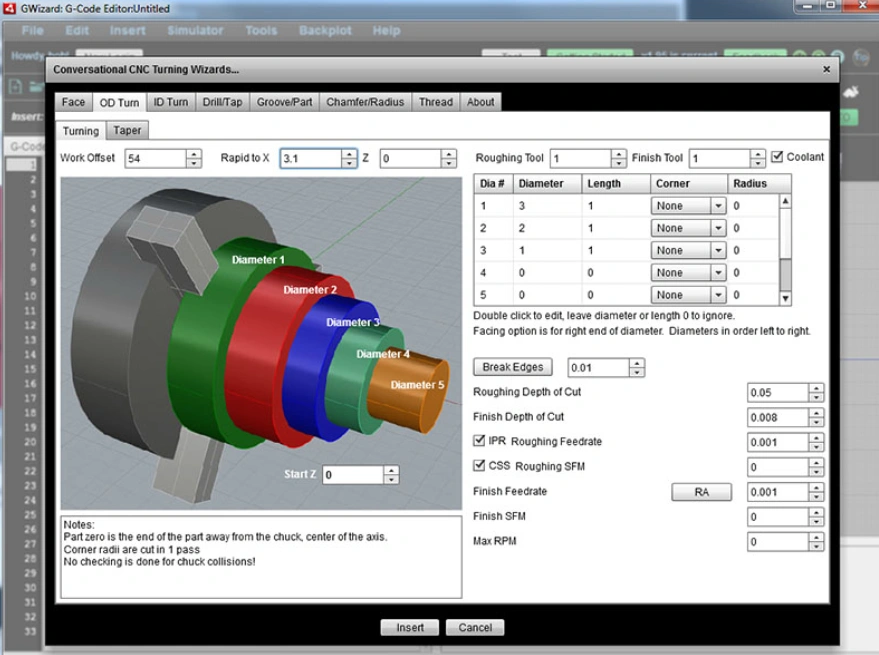
Conversational programming
Main Parameters in CNC Turning
The main CNC turning parameters are the spindle speed, cutting speed, feed rate, cutting depth, tool diameter, and tool length. Further details about these CNC turning parameters are captured in the table below:
| CNC turning parameter | Details |
| Spindle speed, 𝑛 | The speed of workpiece rotation, typically given in revolutions per minute (rpm) |
| Cutting speed, 𝑉𝑐 | The relative speed between the workpiece surface and the cutting tool |
| Feed Rate, 𝑓𝑛 | The movement of the cutting tool relative to the workpiece in one revolution. It is given by millimeters per revolution (mm/r) |
| Cutting Depth, 𝑎𝑝 | The radial removal of workpiece material per pass. It is given in millimeters (mm) |
| Cutting tool length and diameter | These are crucial dimensions of the cutting tool that affect accuracy, precision, and surface finish. |
The Effect of These Parameters on Precision and Accuracy
Spindle speed, feed rate, and depth of cut have a direct effect on precision and accuracy. The machinist should balance these elements carefully to achieve optimum machining results. For instance, a slower feed rate delivers an excellent surface finish, but it removes less material, which can increase machining time.
What Is A CNC Turning Job?
A CNC turning job is any machining process done on the CNC (Computer Numerical Control) turning machine or CNC turning lathe. The workpiece, which can be any machinable material, is typically cylindrical and has to fit into the dimensions of the machine. The workpiece is securely held and rotated fast, as a stationary cutting tool removes material. Common parts made through CNC turning jobs include bushings, fittings, and shafts.
Types Of CNC Turning Operations
CNC turning options include boring, drilling, grooving, knurling, facing, and turning. Under knurling, several techniques are employed, including taper turning and contour turning. These operations can be categorized as either turning specific (external) or internal.
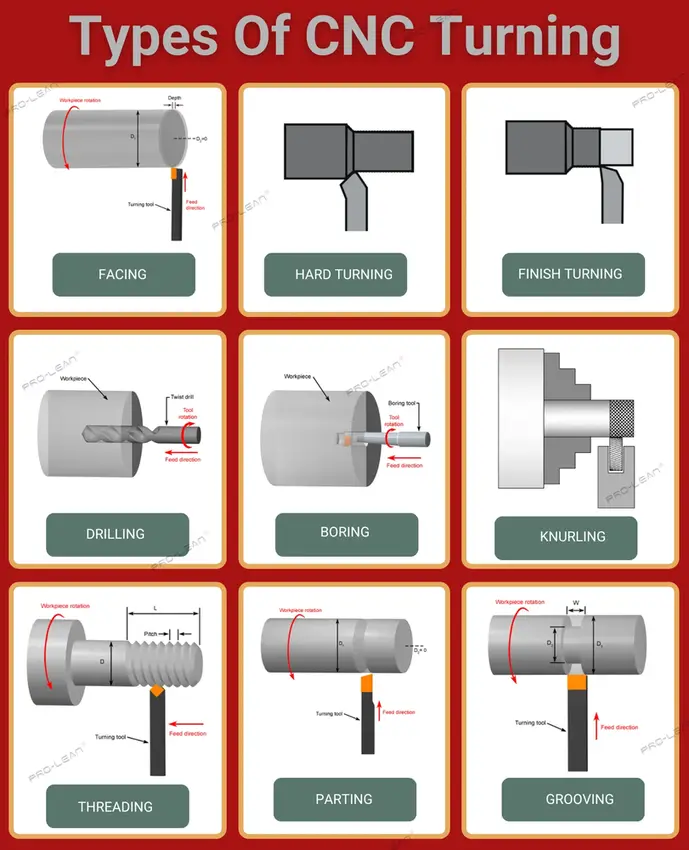
Types of CNC turning operations
Turning Specific (External) Operations
External turning operations work on the outer surface of the workpiece. They include grooving, parting, facing, turning, and hard turning, which are discussed below.
Grooving
In grooving, a shart cutting tool is used to machine a rotating workpiece at a specified section along the length until a cavity or recess is formed.
Parting
When the grooving operation is done until the cutting goes all across the diameter of the workpiece, such as when one end of the workpiece falls off, the operation is called parting. Machinists use parting to separate a finished section from the rest of the stock.
Facing
This operation produces a flat surface on the end of the workpiece. This surface is perpendicular to the longitudinal axis of the workpiece.
Turning
Turning is an operation whereby a stationary single-point turning tool removes material from the surface of the workpiece. Examples of turning are CNC step turning, chamfer turning, contour turning, and taper turning.
Hard Turning
Hard turning refers to the process of doing the turning operation described above on a material with a hardness range of 58 to 70 HRC. The CNC turning lathe for hard turning must be rigid enough to withstand the significant cutting forces generated.
Non-Specific Operations (Internal)
The non-specific CNC turning operations include drilling, boring, knurling, reaming & threading. Their details are mentioned below:
CNC Drilling
Drilling is the process of producing a circular hole in a workpiece. Either the drill bit or the workpiece can rotate.
CNC Boring
The boring operation usually comes after drilling because it entails removing material from the internal diameter of a workpiece. Its function is to enlarge an already formed hole.
Knurling
Knurling creates patterned crests and troughs on the workpiece surface to enhance the aesthetic appeal and friction. The workpiece rotates slowly as knurling wheels are pressed against it to transfer patterns.
Reaming
This CNC turning operation is for enlarging and smoothing an already drilled hole in a workpiece. It is done with a tool called a reamer, which is designed to help achieve the quality and dimensional accuracy of a hole.
Threading
CNC turning can also produce helical screw threads on a shaft through canned cycles. The machinist is required to specify important threading parameters such as length, offset, and size.
Types of CNC Turning Machines
The four main categories of CNC turning machines are vertical CNC lathes, horizontal CNC lathes, vertical CNC turning centers, and horizontal CNC turning centers. These machines are differentiated by their orientations and capabilities.
Vertical CNC Lathe
A vertical CNC lathe is engineered for turning large jobs that require robust support without the risk of sagging that would be present in the horizontal position. This type of CNC lathe is valuable in the machine shop because it can also perform CNC milling operations. The chuck, with the headstock, is on one end, while the tailstock is on the other. Special movable supports carry the cutting tools.
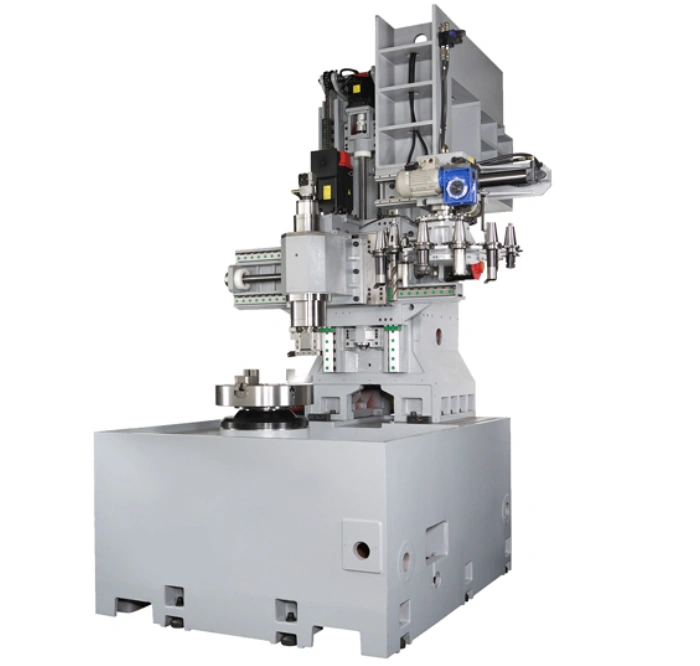
A vertical CNC lathe
Advantages of Vertical CNC Lathe
- Suitable for large, heavy workpieces
- Natural chip evacuation due to gravity
- Occupies relatively less space
- Perfect for machining disc-shaped parts
Limitations of Vertical CNC Lathe
- Not suitable for longer parts
- Requires a larger roof or ceiling space
- Challenging to load heavy workpieces
Horizontal CNC Lathe
The horizontal CNC lathe features a side-to-side fashion instead of the top-to-bottom fashion of the vertical CNC lathe. There are different specifications and sizes of this lathe, as well as for the vertical one, in the market.
Advantages of Horizontal CNC Lathe
- Easy chip management because of lateral discharge
- Open to diverse fixturing and clamping mechanisms
- Easier part loading and unloading
Limitations of Horizontal CNC Lathe
- May not accommodate large diameter workpieces
- Requires a larger floor space
- Chips may easily build up if the chip management is poor
Vertical CNC Turning Center
A vertical turning center is like a vertical CNC lathe, but with extra CNC lathe techniques. These capabilities include milling, tapping, drilling, and automatic tool changers (ATC). The vertical orientation allows for more stability of the workpiece, aided by gravity. The requirement for clamping forces is reduced in this setup.
Advantages of Vertical CNC Turning Center
- Rigid enough to support large diameter workpieces
- High-dimensional accuracy
- Easier setup complexity compared to the horizontal version
- Dual turret capability for shorter cycle times
- Gravitational chip removal capacity
Limitations of Vertical CNC Turning Center
- Relatively expensive to invest in
- Usually needs to work with overhead cranes, which adds to capital investment.
- Tool path strategy is different from horizontal CNC turning center – retraining may be necessary.
Horizontal CNC Turning Center
The horizontal CNC turning center is characterized by a spindle axis that is oriented horizontally. It is designed to perform several turning and milling operations. The horizontal turning center is more common than the vertical design because of not only their versatility, but also that most workpiece diameters can be handled by this style.
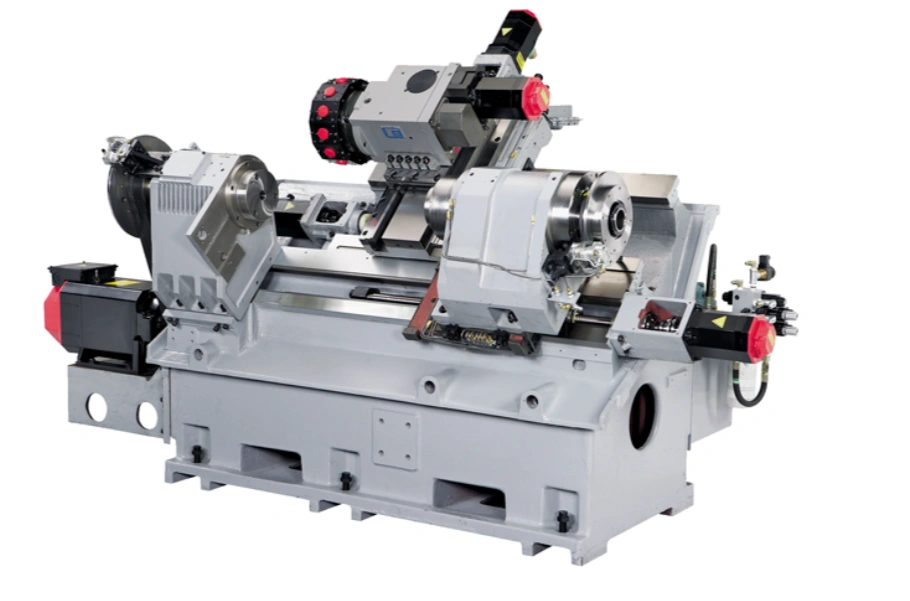
A horizontal CNC turning center
Advantages of Horizontal CNC Turning Center
- Has superior multi-axis machining capability, comprising live tooling and Y-axis milling
- Complements conventional turning with off-center milling and drilling
- The secondary spindle feature minimizes the manual requirement for part setup
- Usually very minimal, if any, requirement for secondary operations
Limitations of Horizontal CNC Turning Center
- High capital investment
- Complex to program
- High maintenance requirement
- Live tooling and specialized tool requirements are capital-intensive
Try Prolean Now!
Components Of CNC Turning Machines
The basic components present in every CNC turning machine are the CNC controller, control panel, base & column, feed mechanism, and worktable. Others are the spindle, tool changer, and cutting tools.
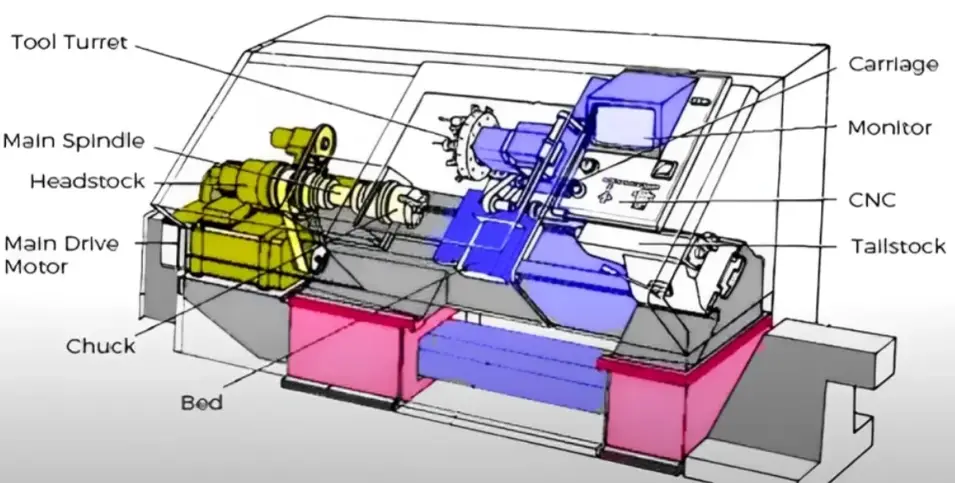
CNC lathe parts
Headstocks and Tailstocks
The headstock and tailstock are positioned opposite each other. The headstock contains the machine’s transmission system, spindle, and drive motor. The tailstock sits across the headstock, positioned for positioning long workpieces and moving along the bed.
Tool Turret
This indexing mechanism accommodates multiple tools and puts a tool in the right position during the turning operation.
Chuck and Collet
The chuck is a workholding device, while the collet is a precision clamping device. Irregularly shaped workpieces are held in four-jaw chucks, while regularly shaped ones are held in three-jaw chucks.
Lathe Bed
The lathe bed is the main structural support for the CNC turning machine. It is rigid with precise straightness and vibration-minimizing capabilities.
Carriage
The carriage is a system that carries the cutting tool and moves across the lathe bed. Its main components are the tool turret, saddle, and cross-slide.
CNC Controller
The CNC controller handles the functions and movements of the CNC turning machine. In other words, it is the brain of the machine. This component works in place of manual machining, as it executes the commands fed to the machine via various codes.
Control Panel
This component is the means for the operator to control respective machine functions, for instance, inputting CNC programs. It has a keyboard, display, buttons, and switches.
Base & Column
The base and column are the supports for the rest of the CNC machine components. The components are designed to be rigid and absorb machining vibrations. Epoxy granite is typically used for these parts to enhance vibration control.
Feed Mechanism
Every CNC turning machine has a feed mechanism, which is an electromechanical system that controls the longitudinal, vertical, and transverse movements. A key component of this mechanism is the motors, which are linked to the controller.
Spindle
The spindle houses the chuck, which holds the workpiece during turning operations. It is driven by the machine’s main motor. The rotating speed of the spindle is determined by the G-code, which is translated by the controller.
Tool Changer
An automatic tool changer in a CNC turning machine carries and provides different types of cutting tools during the machining process. It comes in handy for operations that have to be done in a single run.
Cutting Tool
The cutting tool does the actual turning operation, making it a key part of the system. As the next section shows, there are different types of turning tools, each designed for a specific operation and different types of materials.
The Safety of CNC Turning Machines
Safe CNC turning measures include the following;
- The operator should always wear PPE
- Securing workpieces
- Using appropriate clothing – tight-fitting
- Wearing industrial boots
- Monitoring the CNC turning process
- Routinely inspecting and maintaining the machine
CNC Turning Tool Types
The different CNC turning tool types applied under CNC turning services can be generally categorized as rough turning tools and finish turning tools.
Rough Turning Tools
These CNC turning machining tools are designed for rapid material removal. The tools are used before the finishing turning tools.
Finish Turning Tools
Finish turning tools are used when the aim is to attain the final dimensional accuracy and surface quality of the part. A major difference between the two types of tools is the depth of cutting they support, with rough turning tools going deeper than finish turning tools. You can read more about this concept in the Guide on Depth of Cutting in CNC Machining.
Beyond this general categorization, there are specific tool designs for the different operations already discussed in this article. Indeed, these tools are mostly named after their respective turning operations.
The tool also assumes different shapes, as the diagram below shows.
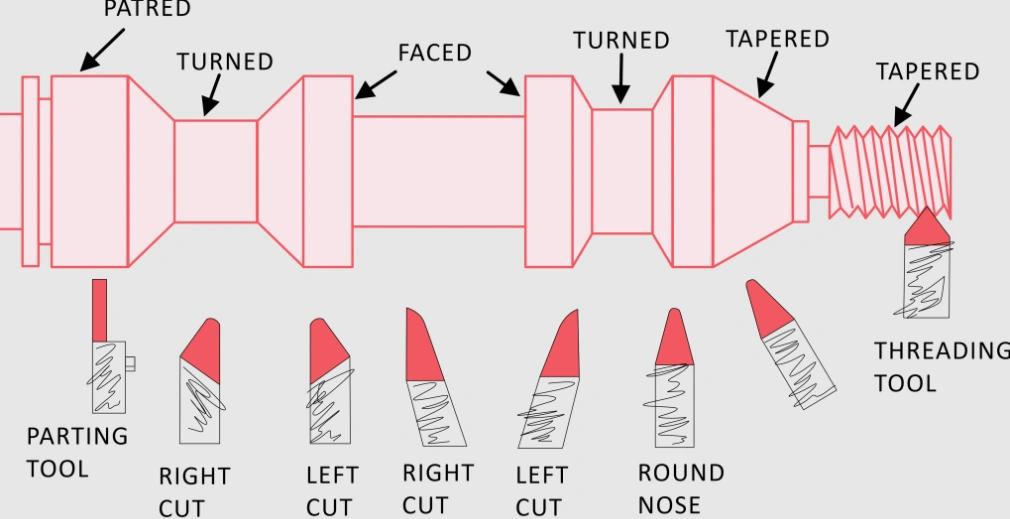
Turning tools with different shapes
Below is a table outlining some of these tools:
| CNC Turning Tool Type | Description |
| Boring Tool | A tool designed to enlarge and refine existing holes |
| Grooving Tool | A narrow tool for cutting channels or grooves |
| Knurling Tool | A tool that presses patterns on a workpiece for a textured surface |
| Parting Tool | A narrow tool used to separate finished parts from raw stock |
| Threading Tool | A tool for cutting internal and external threads |
| Turning Tool | Single-point cutting tool for the general turning process |
CNC Turning Material Options
One of the advantages of CNC turning is that it is versatile because it can work on metals, plastics, wood, and composites. This is a crucial property because most modern industrial environments deal with a blend of materials in their parts.
CNC Turning For Metals
As you would guess, CNC turning parts are commonly made of metals, the options being;
- Aluminum Turning
- Brass Turning
- Carbon steel CNC-machined parts
- Stainless steel CNC-machined parts
- Copper CNC-machined parts
- Titanium CNC-machined parts

Copper CNC turning
CNC Turning For Plastics

Plastic CNC turning
Plastics can also be CNC-turned to make parts that are chemically resistant, durable, and lightweight. The most popular types of CNC plastics are;
- Acrylonitrile Butadiene Styrene, ABS
- Polycarbonate(PC)
- Acrylic, or Polymethyl Methacrylate (PMMA)
- Nylon (PA)
- Polyethylene (PE)
- Polyether Ether Ketone (PEEK)
- Polypropylene (PP)
CNC Turning For Wood
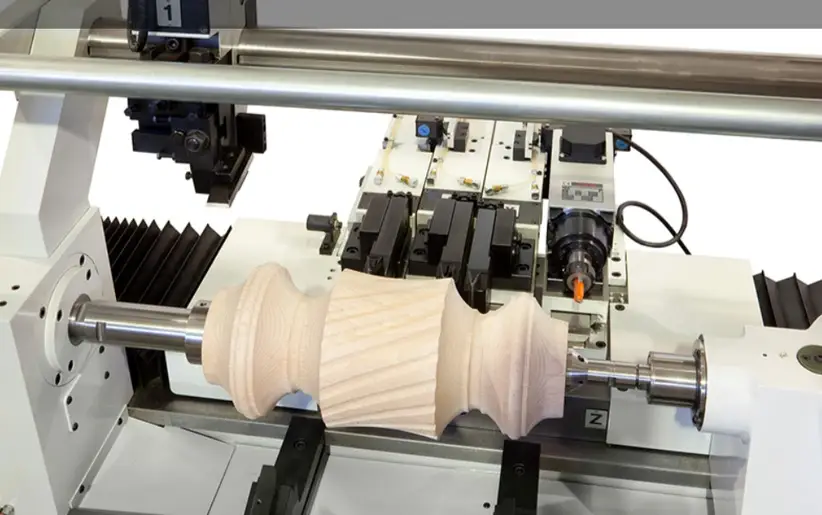
CNC turning for wood
CNC wood turning is also a popular practice, which delivers wood parts for the furniture industry. Material choices for wood turning include oak, cherry, rosewood, walnut, and maple.
CNC Turning For Composites
Composites can also be CNC turned, alongside CNC milling, CNC routing, and CNC drilling. Yes, this material requires special care during CNC machining, especially to prevent delamination problems. With the correct workpiece support, cutting speed, and cutting tool sharpness, CNC turning for composites can be very successful.
Different Applications Of CNC Turning
CNC turning is very precise, versatile, and repeatable, hence turning applications in industries span aerospace, automotive, electronics, energy, and medical.
Aerospace Industry
Precision CNC-turned parts for this critical industry include fittings and turbine blades. The best CNC machining service providers are able to use the most advanced machinery to produce safety precision CNC turning parts from titanium alloys, aluminum alloys, and other high-strength-to-weight ratio materials.
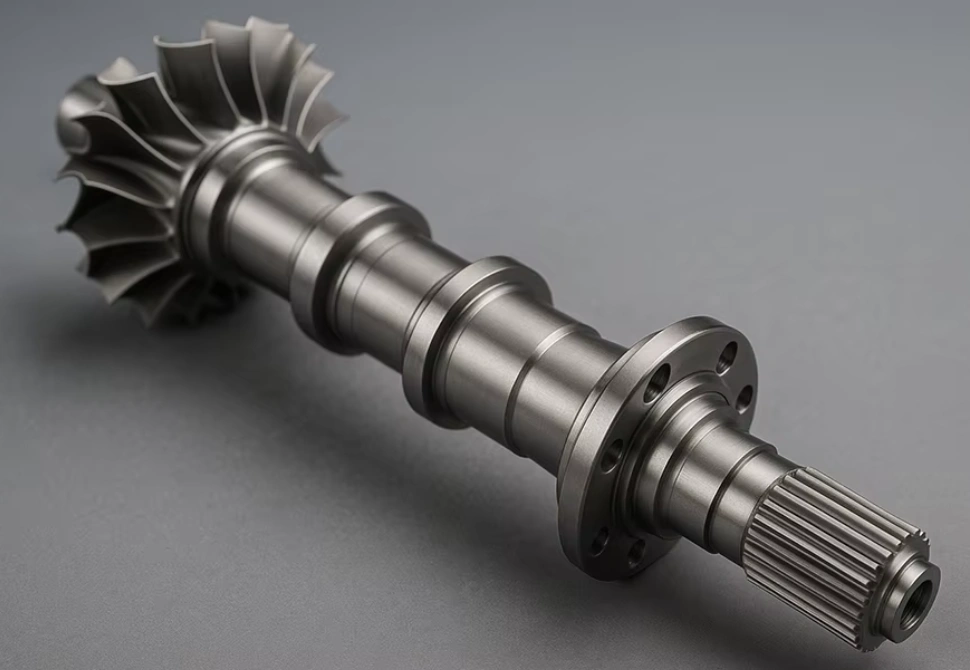
Aerospace shaft
Automotive Industry
CNC turning is a widely used manufacturing method in the automotive industry. It produces transmission shafts, suspension rods, and other parts to close tolerances. CNC turning machining suppliers in this industry can attest to how critical this method is, based on the quality, accuracy, and durability of parts.
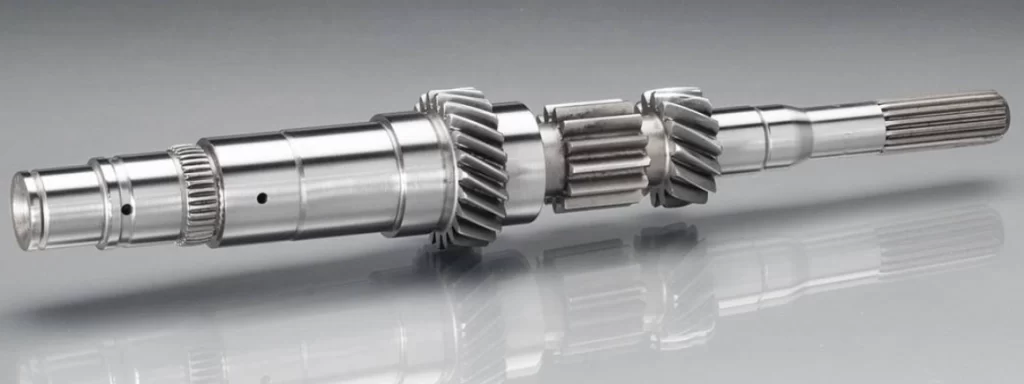
Transmission shaft
Electronics Industry
Manufacturers in this industry safely use precision CNC turning equipment to make cylindrical parts such as connectors, fasteners, and pins.
Energy Industry
The energy industry requires shafts, rotors, and other cylindrical parts. These can be easily manufactured by CNC turning. The method can machine all machinable materials for the industry, from stainless steel to aluminum alloys.
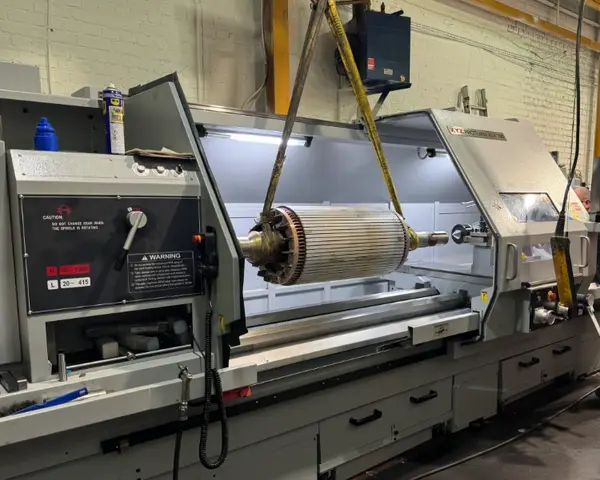
CNC turning for the energy industry
Medical Industry
CNC turning is used to produce cylindrical parts for the medical industry, such as surgical screws, dental implants, centrifuge shafts, and wheelchair axles.
Advantages Of CNC Turning
CNC turning provides the following advantages;
- Software and automation minimize human error
- Versatile – accommodates different designs and sizes
- Shorter lead time
- High-quality parts
- Reliably produces safety precision CNC turning parts
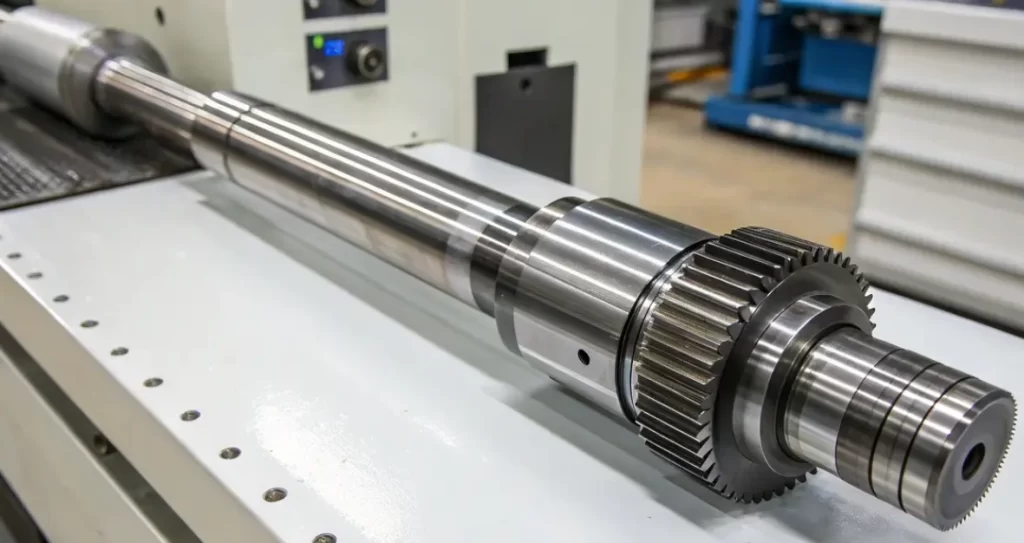
Industrial transmission shaft
Limitations of CNC Turning
The limitations of CNC turning and the recommended solutions are;
- High setup cost of the CNC turning machine – Consolidate orders and partner with a CNC machining service provider
- It may not be suitable for the larger workpieces – Source from providers with large-capacity machines/lathes, consider alternative technologies
- Material wastage – Insist on material optimization strategies
- Chatter or vibrations – Use quality fixturing and tooling
- Poor surface finish – Communicate clearly the finish requirements
- Tool wear – Use preventive measures and quality tooling
What Is The Difference Between CNC Milling And CNC Turning?
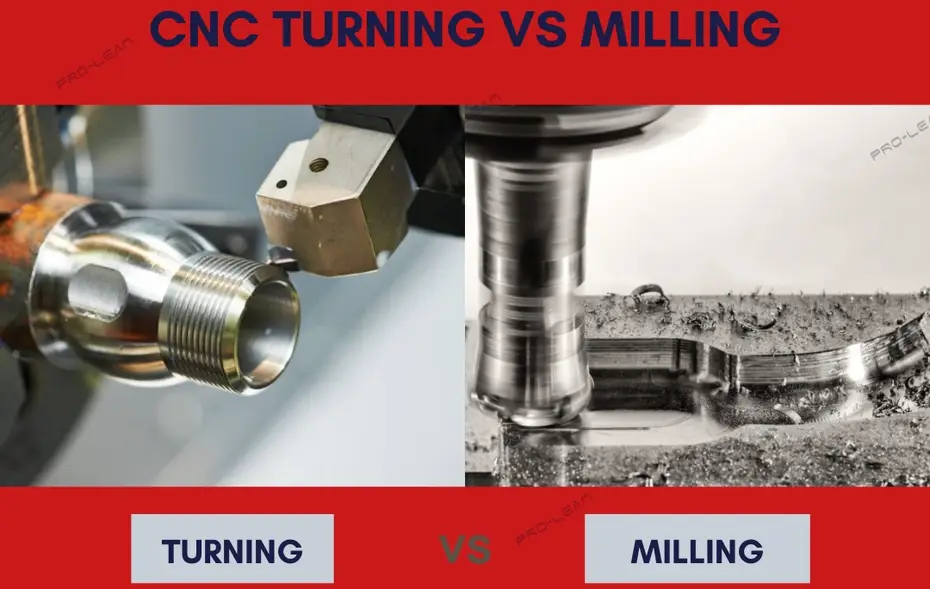
CNC turning vs milling
CNC milling and CNC turning mainly differ in tool dynamics and the nature of workpieces. Here is a summary of these and other differences between CNC milling and CNC turning.
| Property | CNC Turning | CNC Milling |
| Cutting Tools | Stationary single-cutting tool | Rotating multi-point cutting tools, such as end mills and face mills |
| Workpiece Movement | The workpiece rotates | The workpiece is stationary |
| Part Complexity | Symmetrical, cylindrical parts | Complex geometries like pockets and 3D shapes |
| Number Of Axes | Usually, X and Z axes are used, but an extra one is used in live tooling jobs. | Typically X, Y, and Z, but more axes are possible in advanced designs. |
Try Prolean Now!
Alternatives to CNC Turning
In the same breath of comparison, it is important to mention alternative manufacturing methods, which are Swiss machining, manual turning, 3D printing for prototypes, and casting.
Swiss Machining – This technique uses guide bushings that support simultaneous multi-axis operations and minimize deflections for small diameter parts of tolerances as good as ±0.0001″.
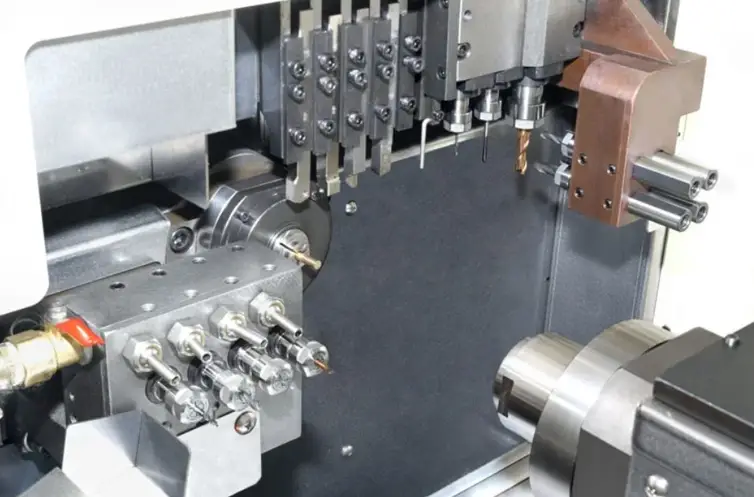
Swiss machine
Manual Turning – Since this doesn’t have automation, it suits small batch or custom part manufacturing.
3D Printing for Prototypes – Works for rapid prototyping of complex parts without the need for high investment. However, 3D printing lacks the surface finish quality and dimensional accuracy of CNC turning.
Casting – Casting may have longer lead times and less precision, but it produces complex parts in high volumes.
Read More:
CNC Lathe vs. Turning Center: What’s the Difference?
Choosing the Right CNC Turning Service
With all the details about CNC turning, it might be time to consider the best provider of these services. The following points can help you find the best partner for CNC turning services.
- Consider a provider with ISO 9001 and other certifications
- Make sure the provider has the necessary material capabilities
- Determine the company’s minimum order quantity (MOQ)
- Ask about the quality inspection processes
- Consider the economic and environmental factors (expounded below)
Economic and Environmental Considerations of CNC Turning
Finally, deciding how to approach CNC turning services or parts requires several economic and environmental considerations.
Here are some points to consider for the two elements:
Economic/cost Considerations
- CNC turning machine investment cost varies widely
- Per part pricing depends on raw material and machining time
- Setup and tooling costs matter
- Large volume manufacturing offers cost savings
Environmental Considerations
- The best CNC turning service providers engage in chip reclamation and coolant recycling.
- Modern CNC lathes are more energy efficient than older machines
- There is ISO 14001 – Environmental management
In Conclusion
CNC turning is a priority manufacturing method for different industries, providing cylindrical and symmetrical parts. Only an experienced manufacturer with a dedicated team can guarantee reliable and accurate parts at cost-efficient rates. Emphasizing customer-centric elements aligned with international manufacturing standards, ProleanTech provides flawless CNC turning services.
Contact us today to get a quote!

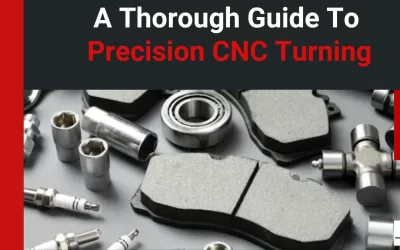
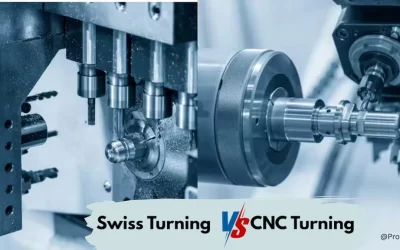

0 Comments